The Samsung QN92/QN90 is a premium device that will satisfy even the most demanding users. Thanks to MiniLED technology, the television offers excellent contrast and high brightness, making movie watching an experience reminiscent of a trip to the cinema. The Tizen system ensures quick and intuitive use, significantly enhancing everyday usage. Users looking for traditional broadcasting will not be disappointed — the QN92/QN90 stands out with superb processing capability for lower-quality materials, translating to better visual experiences. The Solar Remote is an innovative addition that can take control of other devices, such as a satellite decoder, eliminating the need for multiple remotes. Notably, the 144 Hz panel provides exceptionally smooth motion, an essential feature for gamers. Additional gaming features like low input lag and the game bar make the QN92/QN90 an ideal choice for gaming enthusiasts. An additional advantage is the Auto Motion Plus Game feature, which increases image smoothness without a significant rise in input lag, making 30 frames look like 45, and 60 Hz like 90 Hz. This solution allows gamers to enjoy smoother motion without sacrificing gameplay comfort. With high brightness, multiple dimming zones, and MiniLED (Neo QLED) technology, the QN92/QN90 delivers stunning visuals during the day and at night, though slight halo effects may occasionally appear. Wide viewing angles make it a great choice for large living rooms, and the colours, supported by QLED coating, are vibrant and juicy. After additional calibration, the television presents even better quality, making its use a truly pleasant experience.
- Matching (Score)
- Our verdict
- TV appearance
- Where to buy
- Contrast and black detail
- HDR effect quality
- Factory color reproduction
- Color reproduction after calibration
- Smoothness of tonal transitions
- Image scaling and smoothness of tonal transitions
- Blur and motion smoothness
- Console compatibility and gaming features
- Input lag
- Compatibility with PC
- Viewing angles
- TV efficiency during daytime
- Details about the matrix
- TV features
- Apps
- Playing files from USB
- Sound
Samsung Neo QLED QN90D / QN92D vs SAMSUNG QN80F
Direct compare
Check the best price offer:
Samsung Neo QLED QN90D / QN92DCheck the best price offer:
SAMSUNG QN80FNeo QLED / QN92D / QN90D
QN80F

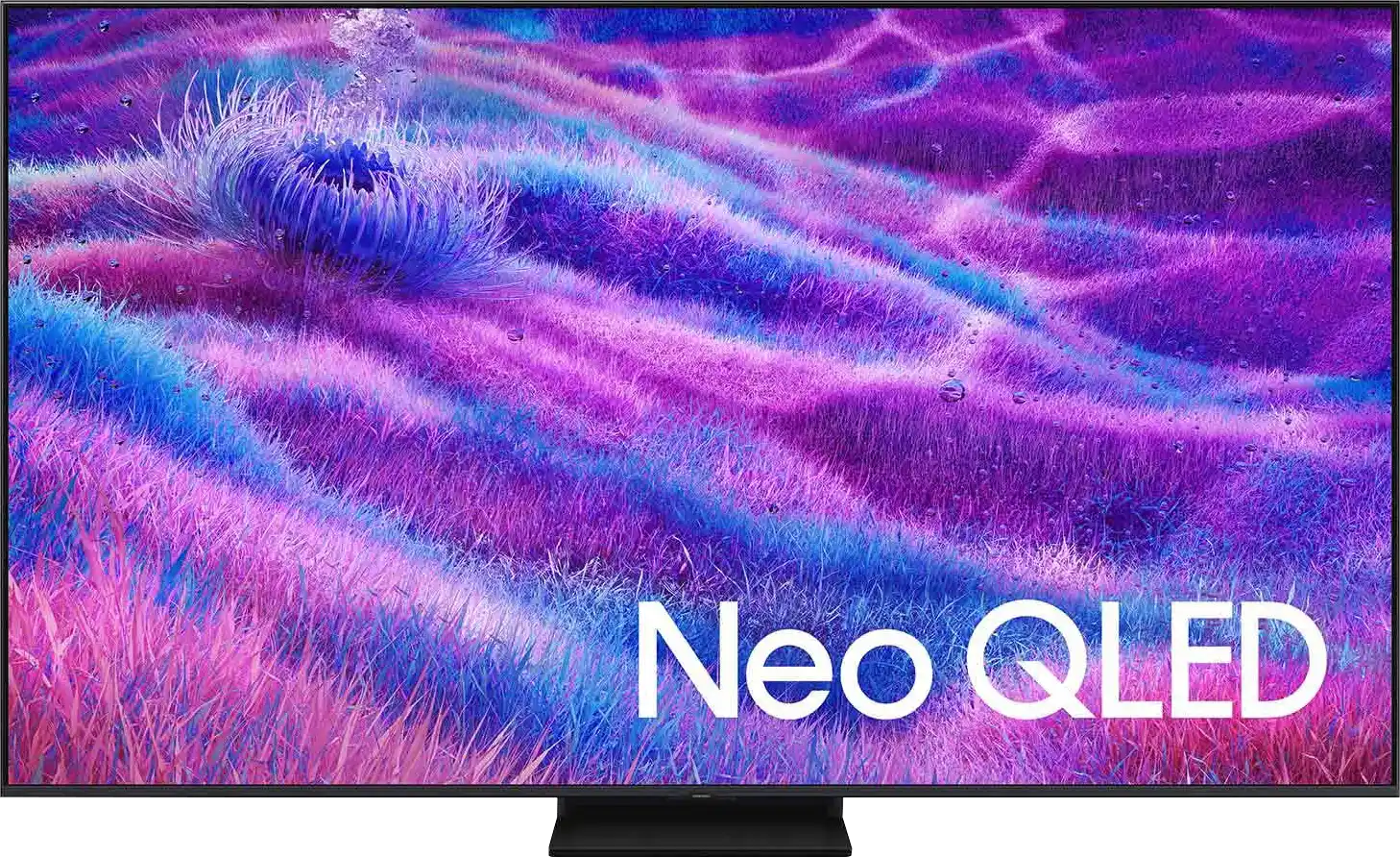
Panel type: LCD VA (wide viewing angle)
Resolution: 3840x2160
System: Tizen
Model year: 2024
Complete the survey to find out the result

Panel type: LCD VA
Resolution: 3840x2160
System: Tizen
Model year: 2025
Complete the survey to find out the result

Overall rating
7.8
7.3
Movies and series in UHD quality
7.9
6.9
Classic TV, YouTube
7.9
6.8
Sports broadcasts (TV and apps)
7.7
6.7
Gaming on console
9.1
8.5
TV as a computer monitor
8.6
8.8
Watching in bright light
6.4
6.6
Utility functions
7.7
7.5
Apps
8.7
8.7
Sound quality
6.9
6.7
Complete the survey to find out what fits your preferences
Advantages
High brightness
Good contrast
Intuitive Tizen operating system
Great for gamers and sports fans (HDMI 2.1, 144Hz, low input lag)
Wide viewing angles - unusual for VA panels
Nice black and contrast - VA matrix combined with MINI-LED backlighting.
Great brightness - up to 1000 nits in HDR
Fast and responsive matrix - 144 Hz
Rich support for gamers - 4xHDMI 2.1, VRR, ALLM, GameBar, Game Motion Plus
Very good usability in daylight
Advanced Tizen operating system
Simple operation
PiP function
Disadvantages
No recording feature
No DTS format support - this may be problematic for Blu-ray users
No support for DTS format – limitation when connecting home theater
No USB recording function
Relatively small number of dimming zones
Issues with HGiG function (for gamers) – update removed this option*
Our verdict
QN80F is the first in the history of Samsung's "eighty" series to feature Mini LED backlighting. And it does this really well. Although the number of dimming zones is not overwhelming, the black level is solid, and combined with high brightness, it allows for a very decent picture in HDR content. Additionally, there's a 144 Hz panel that provides excellent motion smoothness, and the set of features for gamers – VRR, ALLM, Game Motion Plus – makes the QN80F a model practically designed for those playing on console or PC. The television operates quickly and responsively, and the Tizen system runs like lightning – whether you're searching for apps or switching sources. Is there anything to criticize? Of course, as always – there are shortcomings in the system (like recording to USB), there’s no DTS support, and Mini LED is not without its limitations. But the QN80F is a great everyday television – versatile, well-thought-out, and... with significant price potential. Looking at the history of this series, we can expect this "eighty" to shake things up once it hits the first reasonable promotions. And it could be virtually unbeatable at its price – especially if Samsung improves the minor teething issues.
TV appearance





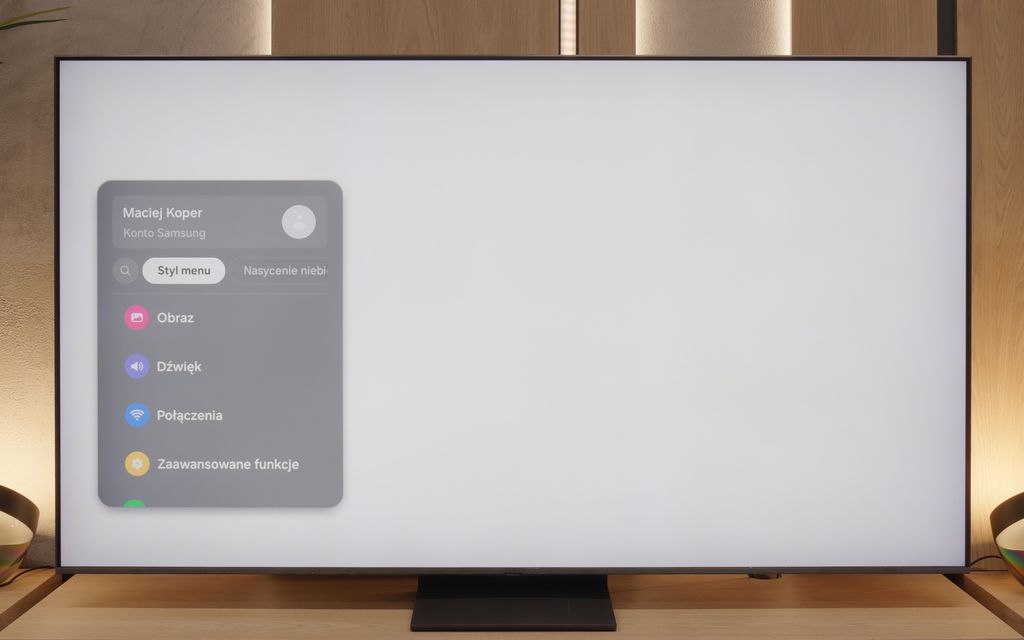
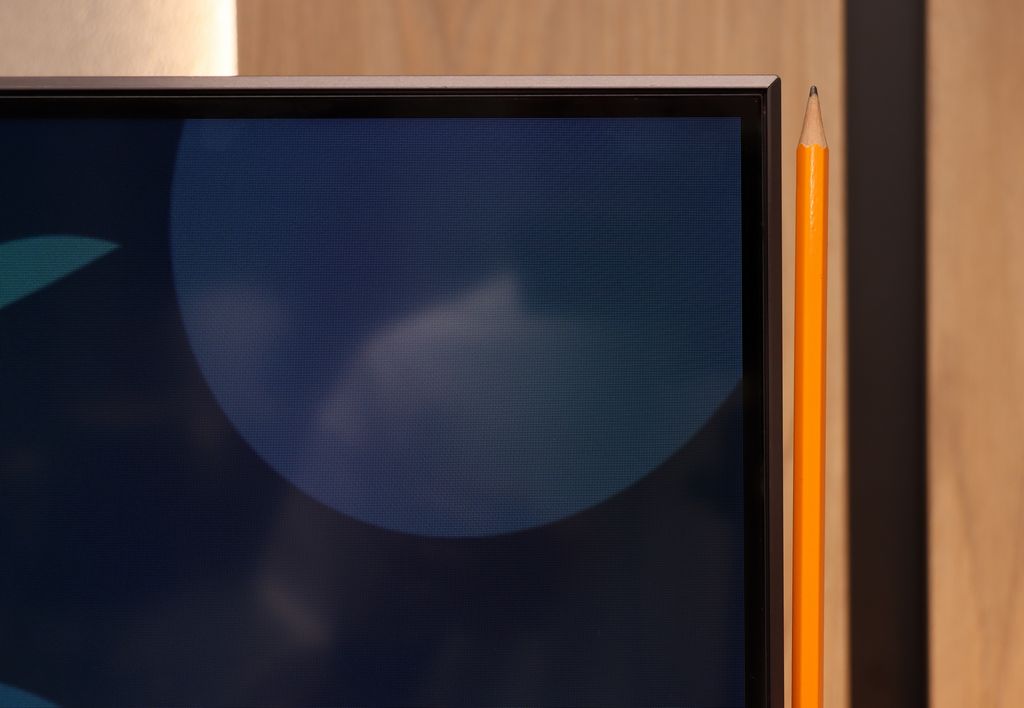
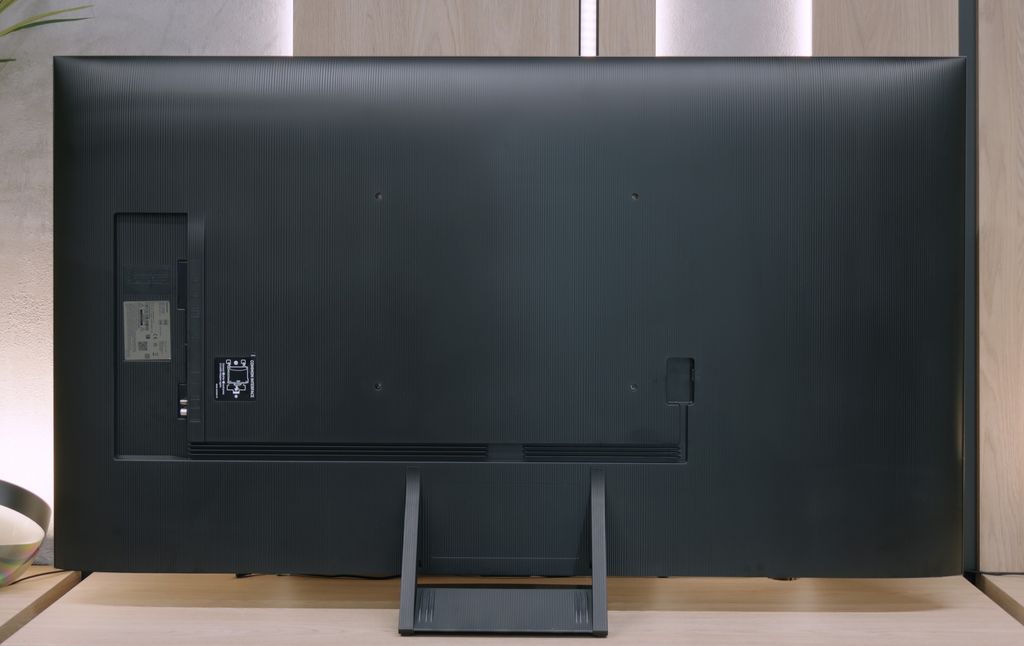

Where to buy
Contrast and black detail
7.9/10
6.8/10
Local dimming function: Yes, number of zones: 504 (36 x 14)
Local dimming function: Yes, number of zones: 88 (8 x 11)
Contrast:

Result
∞:1

Result
69,000:1

Result
∞:1

Result
5,500:1

Result
2,700:1

Result
34,100:1

Result
8,200:1

Result
32,500:1

Result
4,550:1

Result
3,800:1
Halo effect and black detail visibility:

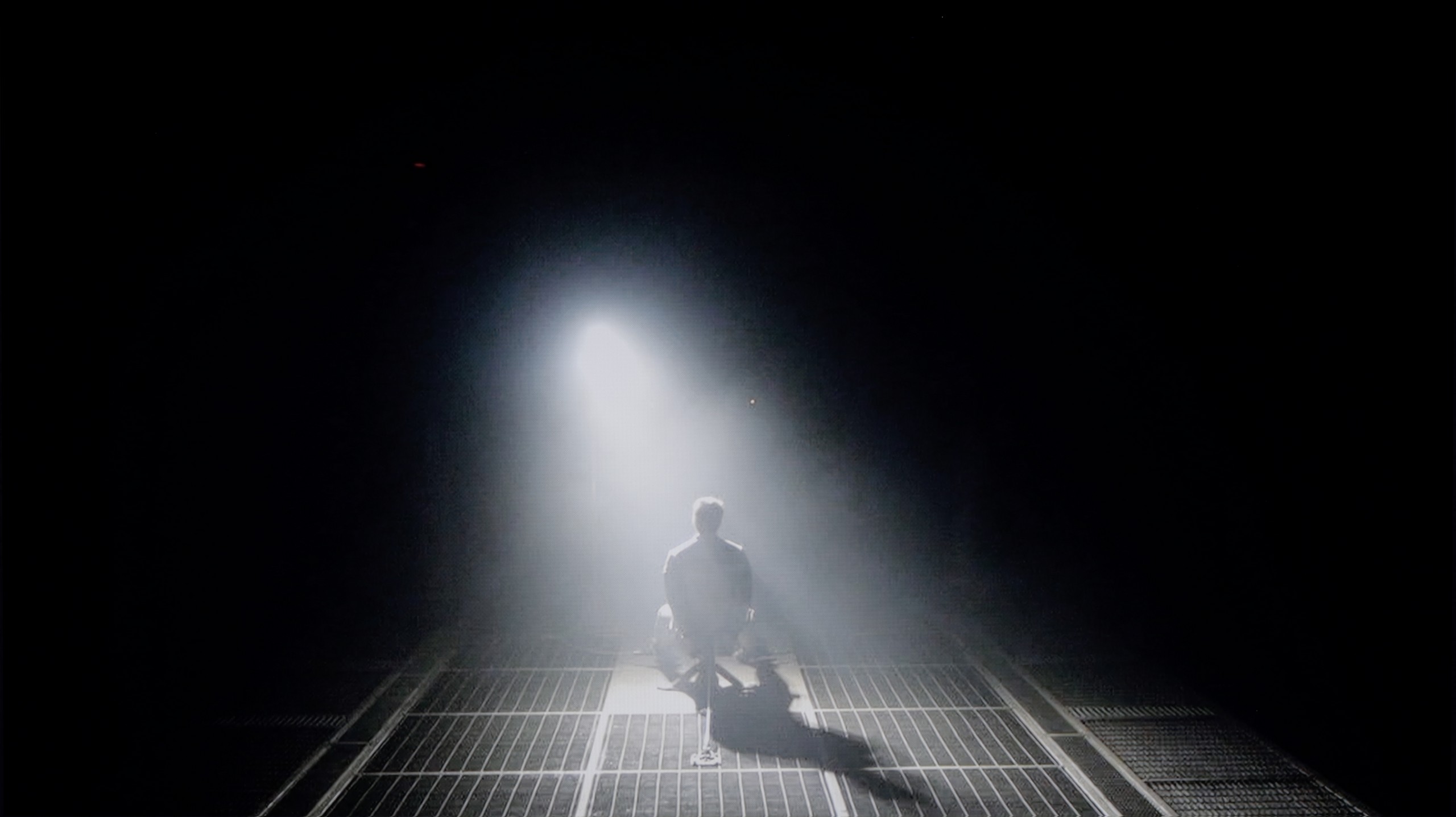
The Samsung QN92D ranks among the top models in the 2024 NeoQLED 4K (Mini LED) line from the Korean manufacturer. Although it doesn't feature as many dimming zones as its more advanced sibling, it still impresses with 504 zones in the 55-inch version. Paired with a VA panel, this setup delivers excellent contrast, making the QN92D stand out in the non-OLED category. Even in challenging scenes, such as those in Oblivion or Arrival, its near-infinite contrast can rival some of the best OLED TVs—an uncommon feat for LED-backlit displays.
However, Mini LED technology does come with limitations compared to OLED. For instance, the TV struggles with certain test patterns, likely due to its aggressive dimming algorithm. This occasionally causes the Mini LEDs to misjudge whether to highlight specific elements or maintain deeper black levels. Despite these minor drawbacks, the Samsung QN92D remains one of the top LCD TVs for contrast and black-level performance.
QN80F is a representative of the Neo QLED series, which means it's a television with Mini LED backlighting. Unlike its cheaper cousin, the QN70F model, here the diodes are placed directly behind the panel (rather than at the edges), which gives a solid advantage in contrast control right from the start. In the 65-inch variant we tested, we counted 88 local dimming zones – a result that may not be particularly impressive, but as it turned out, sufficient to achieve quite decent results.
In tests based on scenes from movies like Oblivion and The Meg, the QN80F performed well – blacks were deep, and the overall image consistency was eye-catching. However, in more demanding moments (e.g., scenes with a lot of bright details on a dark background), a halo effect appeared. This is where the limitation of the number of zones shows – bright elements could bleed into each other, and some details in dark areas lost sharpness and contrast. In one of the helicopter scenes (The Meg), we even noticed a slight flicker in brightness, as if the television was trying its best to maintain visibility of details at the expense of black depth.
However, these are not problems exclusive to this model – the halo effect or contrast drops in very complex scenes are something most Mini LED televisions struggle with, even the more expensive ones. In its class, the QN80F still performs positively and offers clearly better contrast than the QN70F model with edge lighting. For most users, this will be a level more than sufficient – though not ideal.
HDR effect quality
6.7/10
5.8/10
Luminance measurements in HDR:

Result
1947 nit

Result
617 nit

Result
738 nit

Result
271 nit

Result
1479 nit

Result
799 nit

Result
533 nit

Result
717 nit

Result
245 nit

Result
656 nit
Scene from the movie “Pan” (about 2800 nits)


Scene from the movie “Billy Lynn” (about 1100 nits)


Static HDR10


Dynamic: HDR10+
Dynamic: HDR10+


HDR luminance chart:
SAMSUNG QN80F
Luminancja HDR
Luminance of RGB colors
Samsung Neo QLED QN90D / QN92D
Luminancja HDR
Luminance of RGB colors
During synthetic tests, the Samsung QN92D demonstrated remarkable brightness capabilities, reaching an impressive 2000 nits—on par with top models in the market. This level of brightness puts it at the forefront for displaying HDR content, where high brightness is essential. But how does it fare in real movie scenes? Under favourable conditions, such as the light-drenched opening and closing scenes of Life of Pi, the QN92D nearly replicates its lab results, delivering striking brightness levels. However, performance changes in scenes featuring small, bright objects against dark backgrounds, such as the fourth scene in Sicario. Here, brightness levels drop significantly, with maximum values capping at around 600 nits.
As with contrast, these limitations are due to the aggressive local dimming algorithm, which aims to reduce the "halo" effect around bright objects in dark scenes but often sacrifices overall brightness. Consequently, while the TV excels in scenes with abundant light, it faces challenges maintaining brightness with smaller, bright elements on dark backgrounds.
QN80F is quite a bright screen – in synthetic tests, it achieved nearly 1000 nits, which allows for reasonable expectations with HDR content. And indeed, in many scenes, the television truly shines. Sequences with a lot of light – such as shots from the movie Life of Pi or wide, bright surfaces in The Meg – look spectacular. Brightness maintains around 700 nits, which provides a solid effect, sufficient to feel the true "HDR magic." Unfortunately, not every scene looks that good. In materials with small, bright details on a dark background, like in Sicario 2, the television has problems – it can dim certain elements significantly, sometimes to the point where they disappear from the image. This is the result of a limited number of dimming zones, which forces the device to make compromises: either stick to inky blacks or sacrifice some details. QN80F usually chooses the former. As a consolation, it has quite decent coverage of a wide color gamut – DCI-P3 at 93%. This is not the highest score on the market, but it is more than enough for most content on streaming platforms.
Factory color reproduction
6.1/10
6/10


Factory Mode
After calibration


Factory Mode
After calibration
The best mode for colour reproduction on the Samsung QN92D is Filmmaker mode. Although it generally offers good colour quality, it is not without significant issues. Starting with HD/SDR image quality, the main challenge is white balance. The graphs reveal considerable instability, with a dominant red tint that makes the image appear too warm. This imbalance causes shades to shift unnaturally towards warmer tones, potentially affecting the perception of natural colours. Additionally, while contrast, as indicated by the gamma chart, is not the worst, it still falls short of the ideal, impacting overall image quality, especially in darker scenes.
This issue continues with 4K content, such as high-quality series or films. Here too, white balance proves problematic, with noticeable deficiencies in both blue and red, leading to tonal shifts. Tests using the Colour Checker tool confirm these issues, showing a tendency for colours to skew toward yellow hues, further distorting the natural look of the image. While Filmmaker mode remains one of the best options for cinematic content, it could still benefit from improvements, particularly in colour accuracy and white balance.
We always test televisions in the best available factory mode – for the Samsung QN80F, this is the Filmmaker mode, and indeed, it offers the settings closest to the creators' intentions. However, this doesn't mean that everything looks perfect. In SDR content, the biggest issue turned out to be an unbalanced white balance – slight deficiencies in green and a noticeable excess of red led to noticeable color errors, and one could almost say there was a pinkish tint to the screen. This was clearly visible in the color checker test, where colors would "escape" their target fields – to the extent that a sensitive viewer's eye could catch it even without the help of a meter.
In HDR content, the white balance was much better, but another problem emerged – brightness management. The EOTF curve caused an overly bright image most of the time, which could affect the perception of contrast and made the screen slightly "flicker" during dynamic light changes. We have already discussed this in the paragraphs about black and HDR. Fortunately, Samsung leaves the user with plenty of options. The QN80F offers a rich set of calibration options, including a 20-point white balance – that's why we decided to check what this television is really capable of after proper calibration.
Color reproduction after calibration
8.7/10
8.3/10

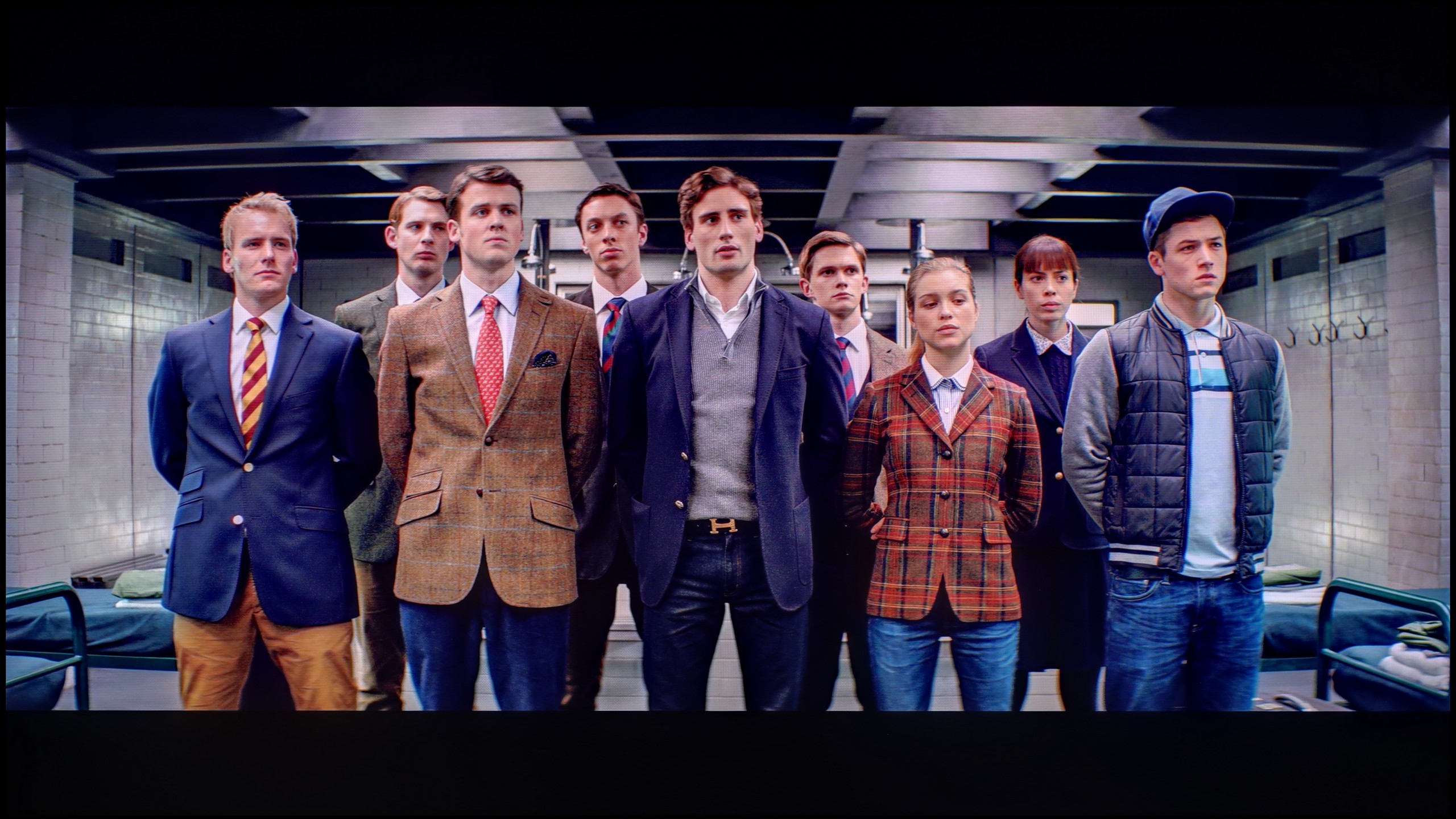


After calibration, the Filmmaker mode on the Samsung QN92D shows significant improvement, particularly with SDR content. The white balance has been greatly enhanced — previous colour shifts and red dominance have been corrected, resulting in more natural colour reproduction. Although the gamma curve didn’t require major adjustments, its stabilisation has positively impacted overall picture quality.
In high-quality materials, the white balance has also improved. However, contrast remains an area to watch. The EOTF curve initially appears accurate, but closer inspection reveals that the television struggles to maintain consistent contrast in film content, indicating further room for improvement. Despite these areas, one advantage is the TV’s colour saturation. Skin tones are rendered well, and while some colours may be slightly oversaturated, the overall effect is rich and vibrant.
Despite minor contrast limitations, the calibrated Filmmaker mode on the Samsung QN92D delivers excellent picture quality, with natural colours, making it a strong choice for movie watching.
After conducting a thorough calibration, it was possible to bring most image parameters to a really good level. The white balance in both SDR and HDR appears nearly perfect – the image is natural, neutral, and free of the previously noticeable reddening. The colors have gained depth, and the overall visual reception has become more pleasant and cohesive. It was also possible to partially master brightness management, which in the factory version could be problematic. The EOTF chart shows that the television performs significantly better with brightness after calibration – there's no longer excessive dimming of certain elements. In films, it can still be observed that the QN80F has a tendency to slightly brighten the smallest, bright details – this is already a result of the device's construction and the limited number of dimming zones. In short: not everything can be overcome, but what could be improved has been addressed. After calibration, the QN80F makes a really good impression; it simply looks more mature and professional.
Smoothness of tonal transitions
9/10
9/10





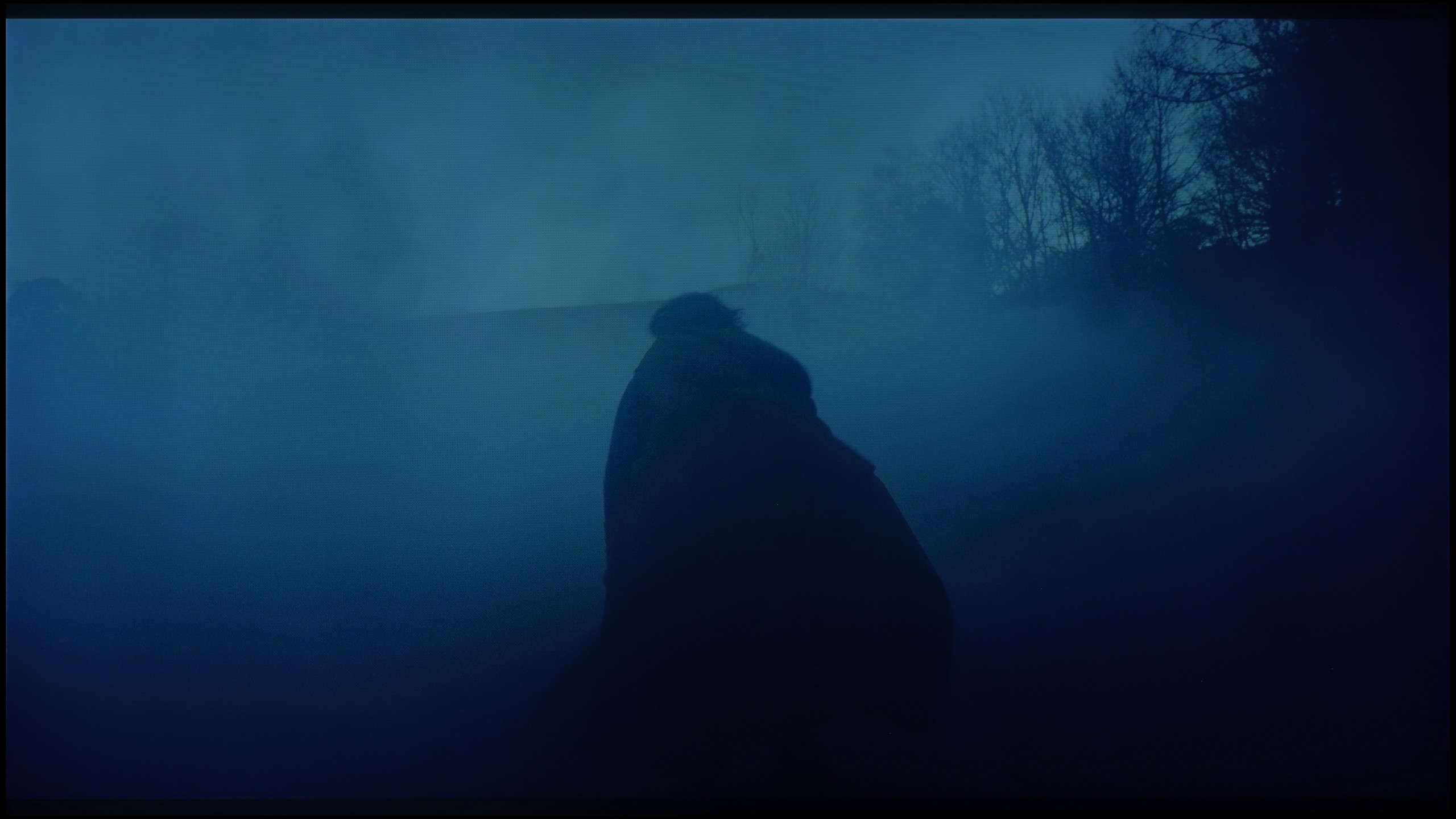

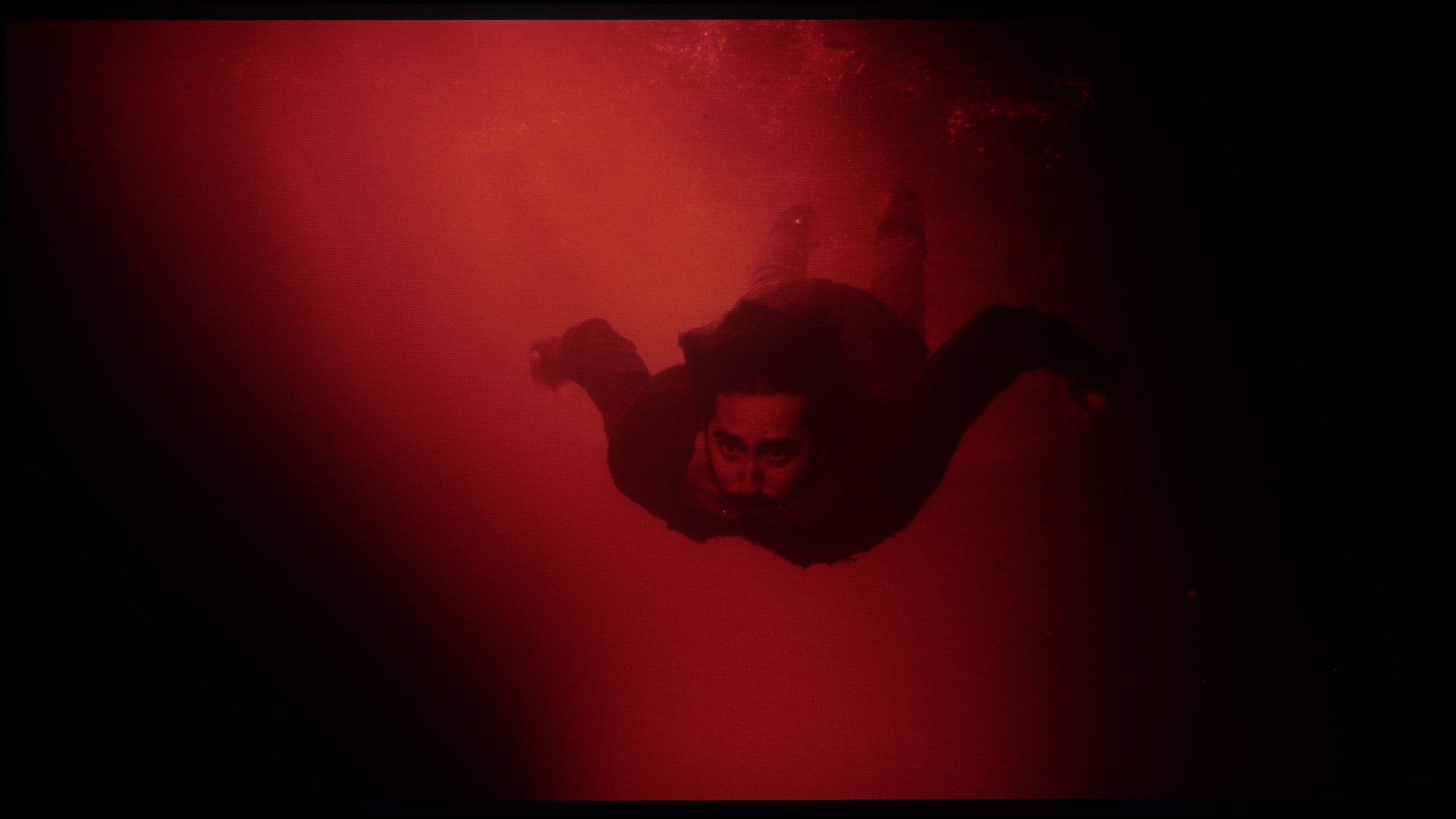




The Samsung QN92D television excels in the fluidity of tonal transitions, giving the image a remarkably natural appearance without visible artefacts. It performs exceptionally well in scenes with complex colour gradations, delivering smooth and uniform transitions. Competing OLED televisions in a similar price range could take note, as the Samsung QN92D provides a quality that rivals even models equipped with QD-OLED panels.
In this regard, the QN80F really delivers. The transitions between colors are smooth, nothing is choppy, and there are no annoying bands in the sky or strange blotches in the shadows. Movie scenes in darker tones performed particularly well – and that's where most televisions start to struggle. If one really looks for it, slight banding can be seen in the brightest areas, but that's really just nitpicking. In everyday viewing, no one should have a problem with this. To put it simply: the tonal transitions are so good that you can forget about them – and just enjoy the movie.
Image scaling and smoothness of tonal transitions
7.2/10
7/10
Smooth transition function


Image without overscan on the SD signal

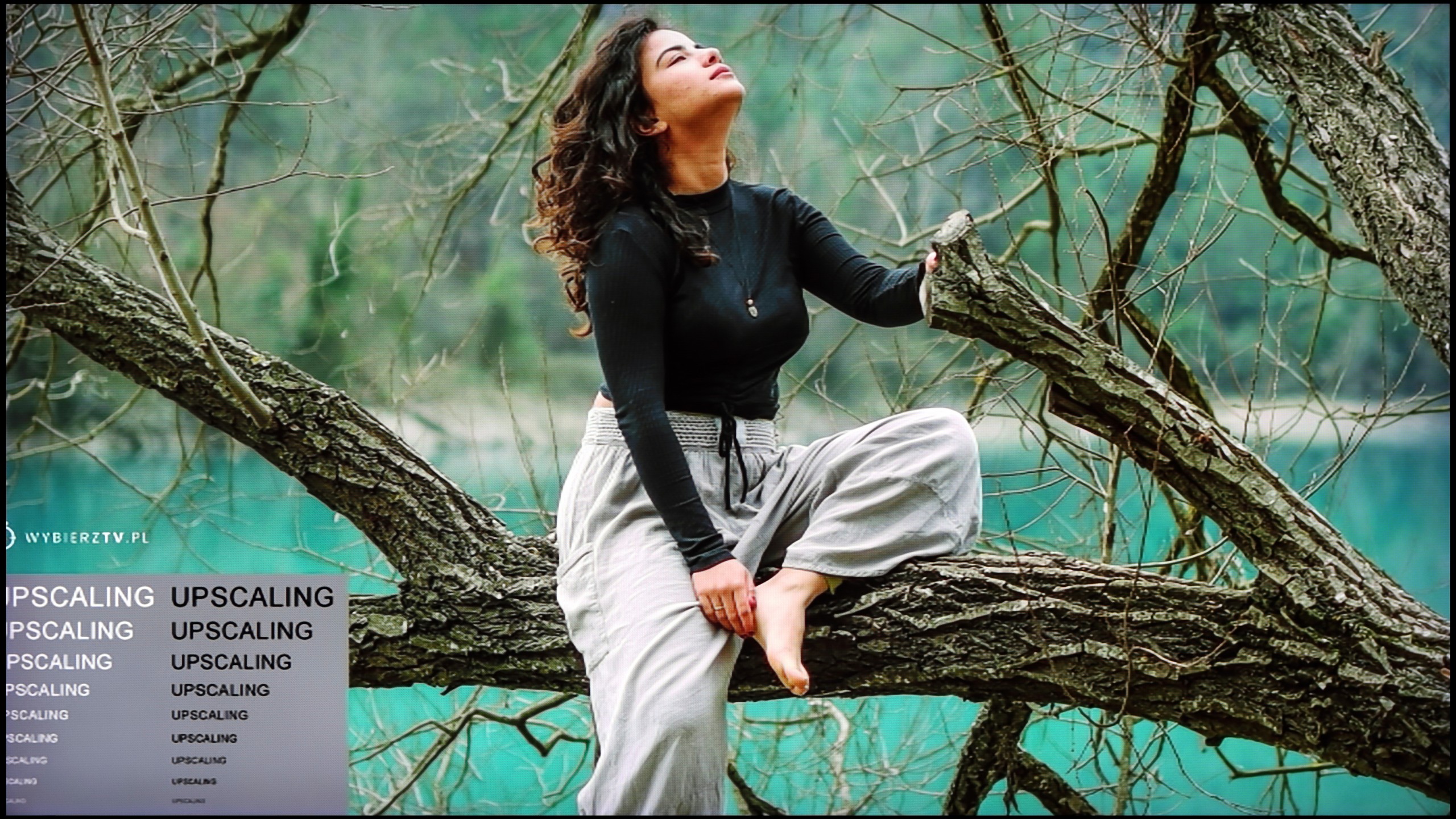
Let's examine how the Samsung QN92D television manages tonal transitions in low-quality materials. The noise reduction function is highly effective, enhancing the fluidity of tonal transitions even under challenging conditions. However, it’s worth noting that, as with other Samsung televisions, this feature can occasionally remove desirable elements, such as film grain, which may affect image authenticity.
In terms of digital processing, the Samsung QN92D also performs impressively. During testing, the image appeared natural and well-balanced, with details like background branches precisely reproduced, underscoring the television’s ability to enhance the quality of low-resolution materials.
If, while watching lower-quality materials – for example from YouTube – we notice strange color transitions or unwanted artifacts, it’s worth checking the settings and enabling the noise reduction function. In our opinion, the best setting is at the "medium" level – it effectively smooths out problematic color transitions while not excessively blurring the entire image. However, one must know this: this option tends to remove film grain. If someone cares about preserving this effect (e.g., in older films), it’s better to just turn it off – regardless of the level, the grain always disappears.
When it comes to scaling resolution (i.e., the so-called upscaling), Samsung – as always – performs very well in this area. The QN80F may not compare to the top models worth several thousand, but for its price class, it really performs impressively. Very low-quality materials (e.g., from SD television or older video files) are noticeably improved and look surprisingly decent. The only noticeable drawback is the typical Samsung issue with overscan – that is, slightly cropping the edges of the image at very low resolutions, e.g., 576p.
Blur and motion smoothness
7.5/10
7.5/10

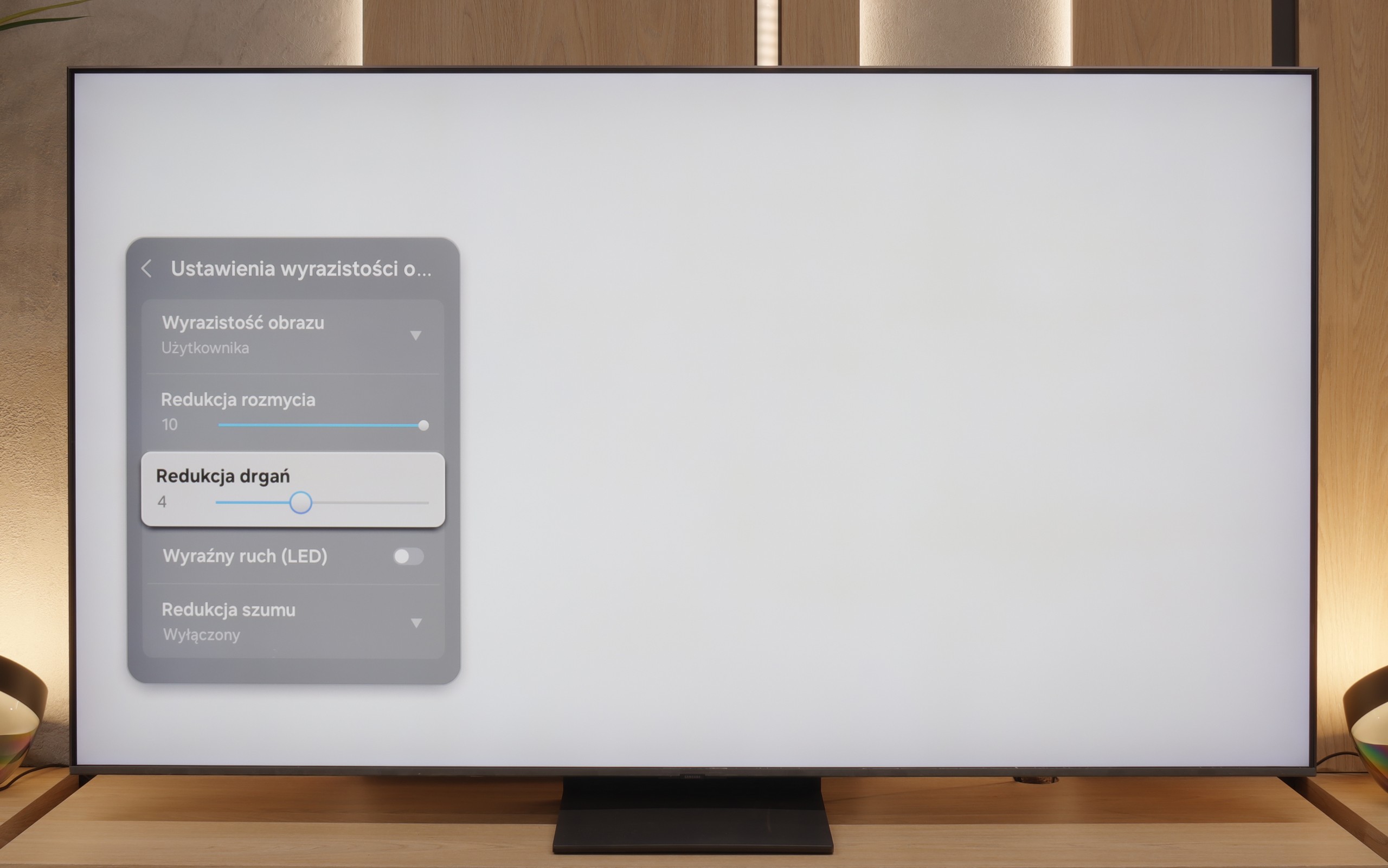
Blur (native resolution, maximum refresh rate):




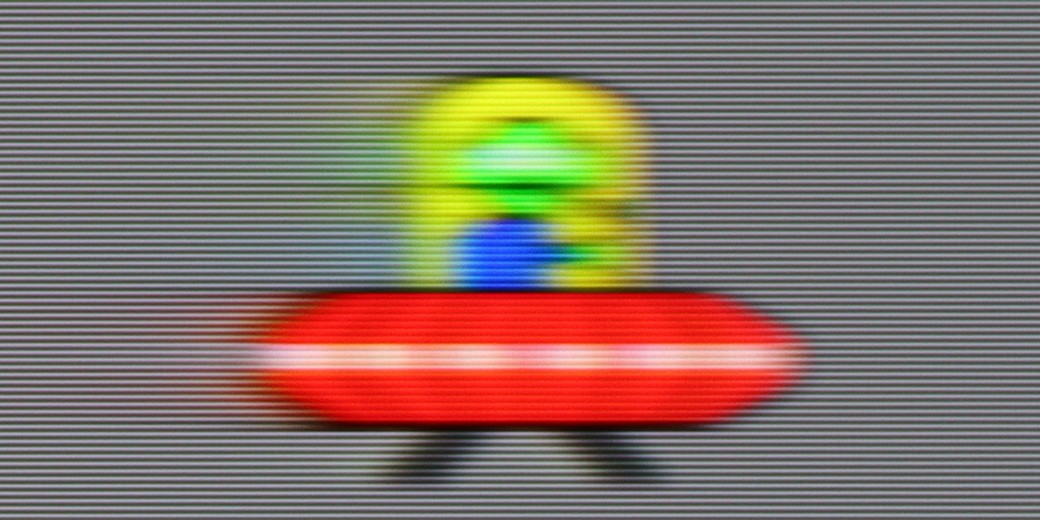

Blur (BFI function enabled):
Image flickers in this mode



Image flickers in this mode

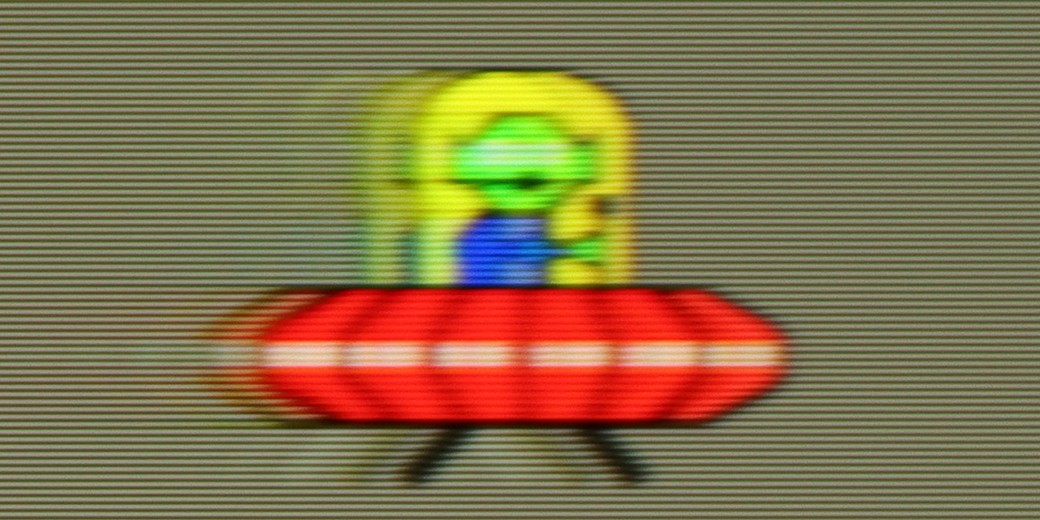

The Samsung QN92D TV features a 144 Hz panel, however, when using the motion smoother, the maximum refresh rate adjusts to 120 Hz. This setup ensures excellent picture quality for both gamers and sports enthusiasts. Additionally, the TV offers a range of image enhancement options, such as the "blur and judder reduction" feature, which lets users fine-tune smoothness on a 10-point scale. Blur reduction sharpens fast-moving objects, while judder reduction smooths out motion, eliminating the "stutter" effect. With these advanced settings, the Samsung QN92D provides optimal visual experiences for dynamic scenes and intense gameplay alike.
The TV performs impressively in terms of motion blur, with minimal issues. The only minor drawback is a slight overshoot effect noticeable on dark backgrounds in our "Ufoludkiem" test. Nonetheless, with its advanced smoothness settings, the Samsung QN92D delivers outstanding performance for both fast-paced scenes and immersive gaming sessions.
QN80F is truly a "fast" television. The applied panel offers a refresh rate of up to 144 Hz, which in practice means that the screen keeps up with the action – whether we're watching a movie, playing games, or browsing dynamic content on the internet. The image doesn't tear, it doesn't excessively blur, and everything simply looks smooth and pleasant to the eye. Of course, the manufacturer hasn't forgotten about movie fans – in the settings, we find an option for motion smoothness adjustment, allowing us to tailor the effect to our personal preferences. You can leave a more "cinematic" look (for those who enjoy a classic film vibe) or crank up the smoothness to a higher level for a theatrical smoothing effect. Importantly, the choice is ours. Watching movies and playing on the QN80F is simply a joy.
Console compatibility and gaming features
9.5/10
8.2/10
- ALLM
- VRR
- VRR range48 - 144Hz48 - 144Hz
- Dolby Vision Game Mode
- Correct implementation of HGIG
- 1080p@120Hz
- 1440p@120Hz
- 4K@120Hz
- Game bar

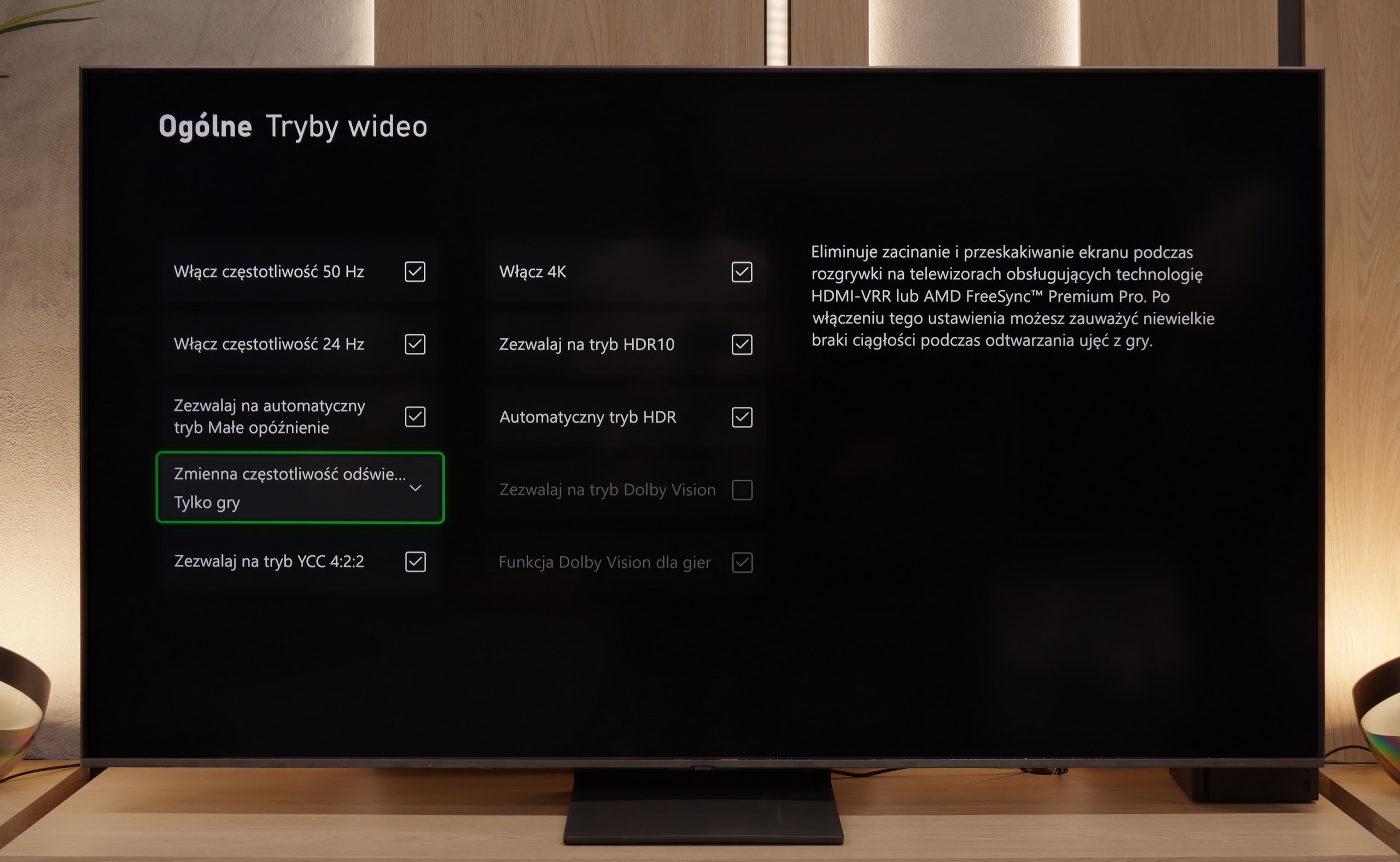



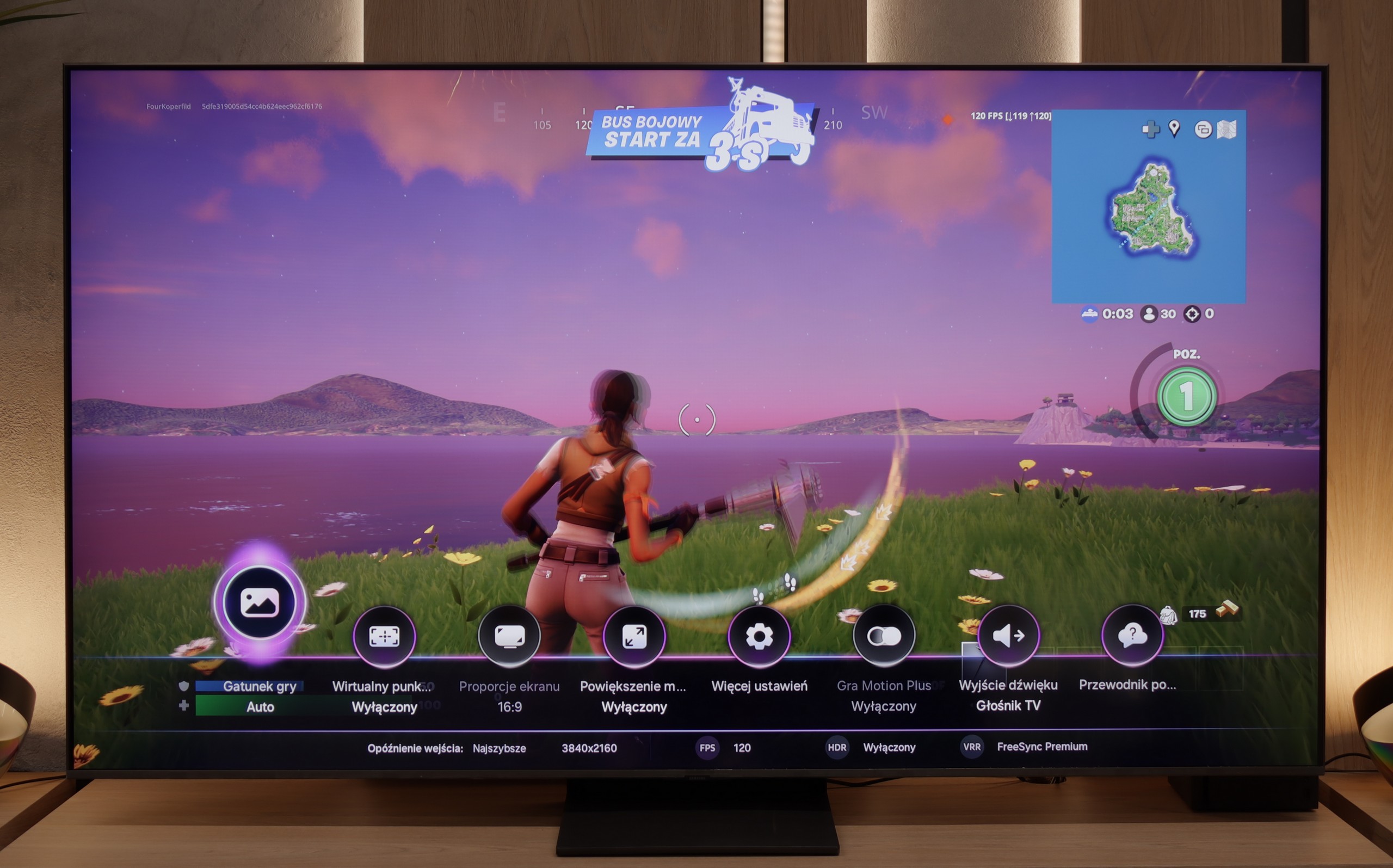

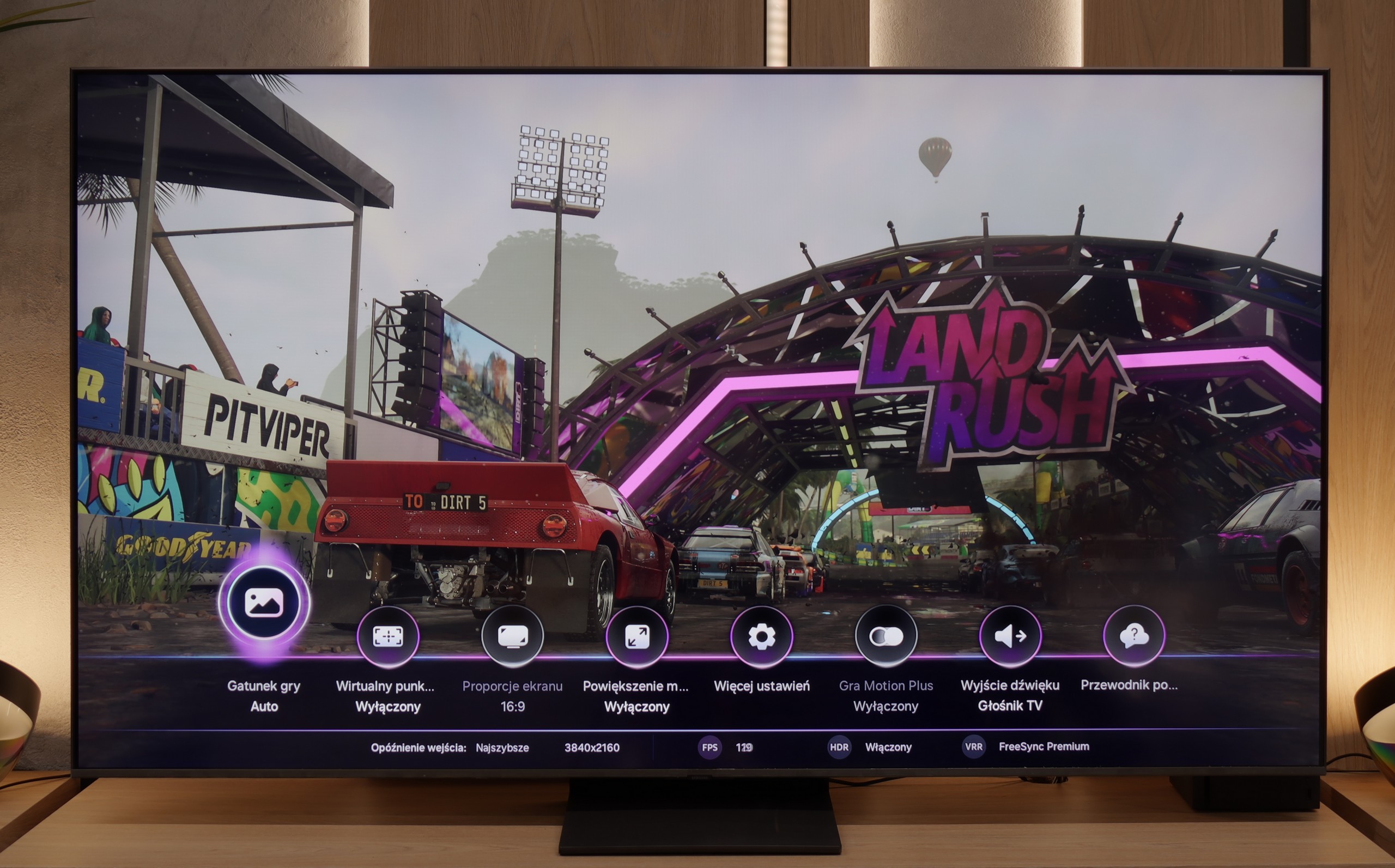
The Samsung QN92/QN90 TV is an outstanding choice for avid gamers and is highly recommended. This model provides virtually every gaming feature currently available, enhancing the excitement of gameplay. A standout feature is the 120 Hz panel, delivering impressive motion smoothness, which is especially beneficial during action-packed games. The TV also boasts low input lag, ensuring quick responses to player commands. Additionally, VRR (Variable Refresh Rate) and ALLM (Auto Low Latency Mode) optimise refresh rates and automatically activate gaming mode, further elevating the gaming experience. An additional bonus is the Xbox app, enabling users to play directly on the TV without needing a console—an exclusive feature in Samsung TVs, adding to their appeal in the gaming world.
Samsung’s Auto Motion Plus Game feature deserves particular praise. This motion smoother is highly effective in gaming, making lower frame rates appear smoother—30 frames per second can look like 45, and 60 Hz can resemble 90 Hz. Crucially, it achieves this without introducing noticeable input lag (keeping it below 25 ms), so gameplay remains highly responsive, unlike many other motion-smoothing options on the market. As a result, players can enjoy a smoother visual experience without sacrificing responsiveness.
The Samsung QN80F is a TV that delivers on almost every front when it comes to gaming. We have a 144 Hz panel, four fully-fledged HDMI 2.1 ports, support for gamers in the form of variable refresh rate (VRR), automatic low latency mode (ALLM), and even one of the best-designed game bars on the market. The cherry on top is the motion smoother, which – uniquely in the world – works in games without significantly increasing input lag. Sounds like almost the perfect TV for gamers? And indeed, it is almost that.
As usual, Samsung does not support Dolby Vision in games, but that no longer surprises anyone. However, what is much more surprising is that... the HGIG feature has disappeared – that is, the system that allows the console (e.g., PlayStation 5 or Xbox Series X) to precisely match HDR tone mapping to the TV's capabilities. In the latest firmware update for the 2025 models, this option has simply vanished. It looks more like a bug than a deliberate move, but it must be honestly pointed out that as of the day of writing this review, the HGIG feature is simply not available.
And it is precisely because of this one deficiency that the QN80F goes from being almost the perfect gaming TV to a "nearly" perfect device. It's a shame – because everything else indicated that Samsung could set the bar very high once again in this generation.
Input lag
9.9/10
9.8/10
SDR
HDR
Dolby Vision
Input lag is a crucial factor for gamers, and the Samsung QN90D excels in this area. With input lag values below 13 ms, the delay between pressing a controller button and the on-screen response is minimal. This low value ensures smooth and responsive gameplay, satisfying both casual gamers and professionals, for whom every millisecond counts. As a result, the Samsung QN92D stands out as an excellent choice for those who prioritise precision and speed in their gaming experience.
QN80F does not disappoint when it comes to response time. The input lag for 120 Hz content drops below 10 ms, which can be considered an almost ideal result – it’s hard to expect more in this class of TVs. Gaming is smooth, responsive, and free from delays that could irritate even the most sensitive players. For 60 Hz materials, the lag is higher, around 19 ms, but this is a completely natural phenomenon and still falls within comfortable limits.
Compatibility with PC
8.6/10
8.8/10

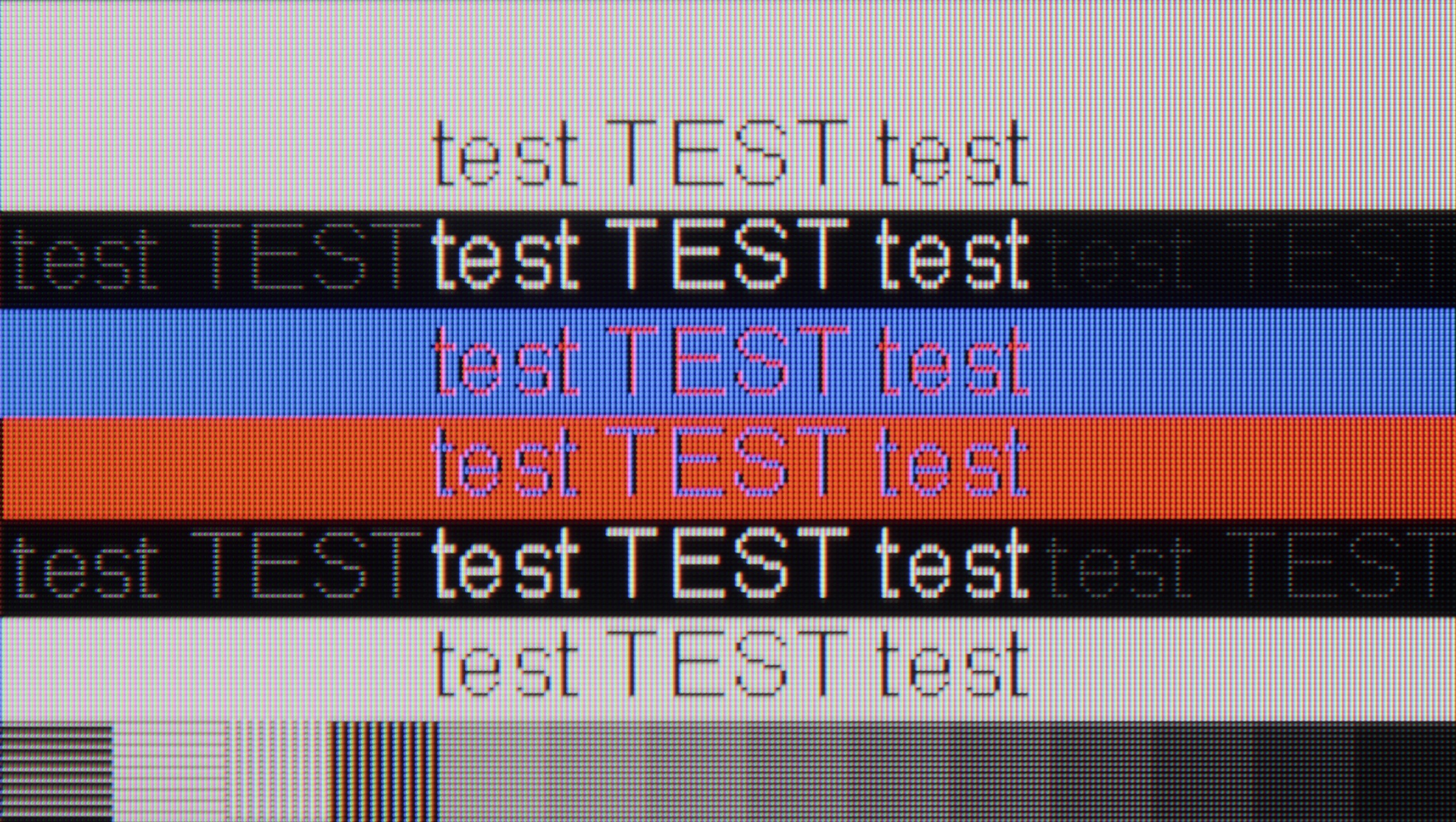
The television stands out for its high performance, supporting chroma 4:4:4 and offering exceptionally low input lag. These features allow users to enjoy fluidity and responsiveness, making it an excellent choice for office work and everyday applications. However, one notable drawback is the poor visibility of horizontal lines on a dark background. On the test pattern on the right, letters appear more like vertical lines, which can be frustrating for some users. Nevertheless, the TV generally works well with computers, providing comfort in performing daily tasks. It is also worth mentioning in this paragraph the "Remote PC" feature, thanks to Microsoft's collaboration with the Korean giant, we can seamlessly pair Windows PCs and use Office 360 applications.
Playing on the QN80F with a connected computer is pure pleasure. The TV works seamlessly with NVIDIA graphics cards (thanks to G-Sync support) and AMD (thanks to FreeSync Premium), and the 144 Hz refresh rate only enhances comfort during dynamic gameplay. Everything works right away, without unnecessary fiddling with settings – exactly as it should.
When it comes to work, it is also very good. The readability of fonts is high, and the texts appear sharp and clear. With very thin horizontal lines, one can notice slight imperfections, but really – you have to look closely. Unless, like us, you sometimes enjoy examining the screen with a magnifying glass… then you might spot something 😉.
Viewing angles
7.1/10
3.1/10
With VA panel TVs, limited viewing angles are typically expected; however, the Samsung QN90D excels in this area. Thanks to its special coating designed to expand viewing angles, this TV delivers impressive performance rarely seen in devices with VA panels. While VA panels generally fall short in this regard, the QN90D maintains clear and vivid picture quality even when viewed from the side. This makes it an excellent choice for larger rooms and group viewing situations.
QN80F, like most TVs with VA panels, does not impress in terms of viewing angles. It is enough to lean slightly to the side to notice a significant drop in brightness and lost color saturation. The image loses its "depth" and "vividness," and darker scenes may appear slightly washed out. However, this is a typical characteristic of VA panels, which in return offer significantly better native contrast than IPS panels. In short: something for something. If you are sitting directly in front of the screen – there will be no problem. But when watching together in a larger group, it is worth keeping this in mind.
TV efficiency during daytime
6.4/10
6.6/10

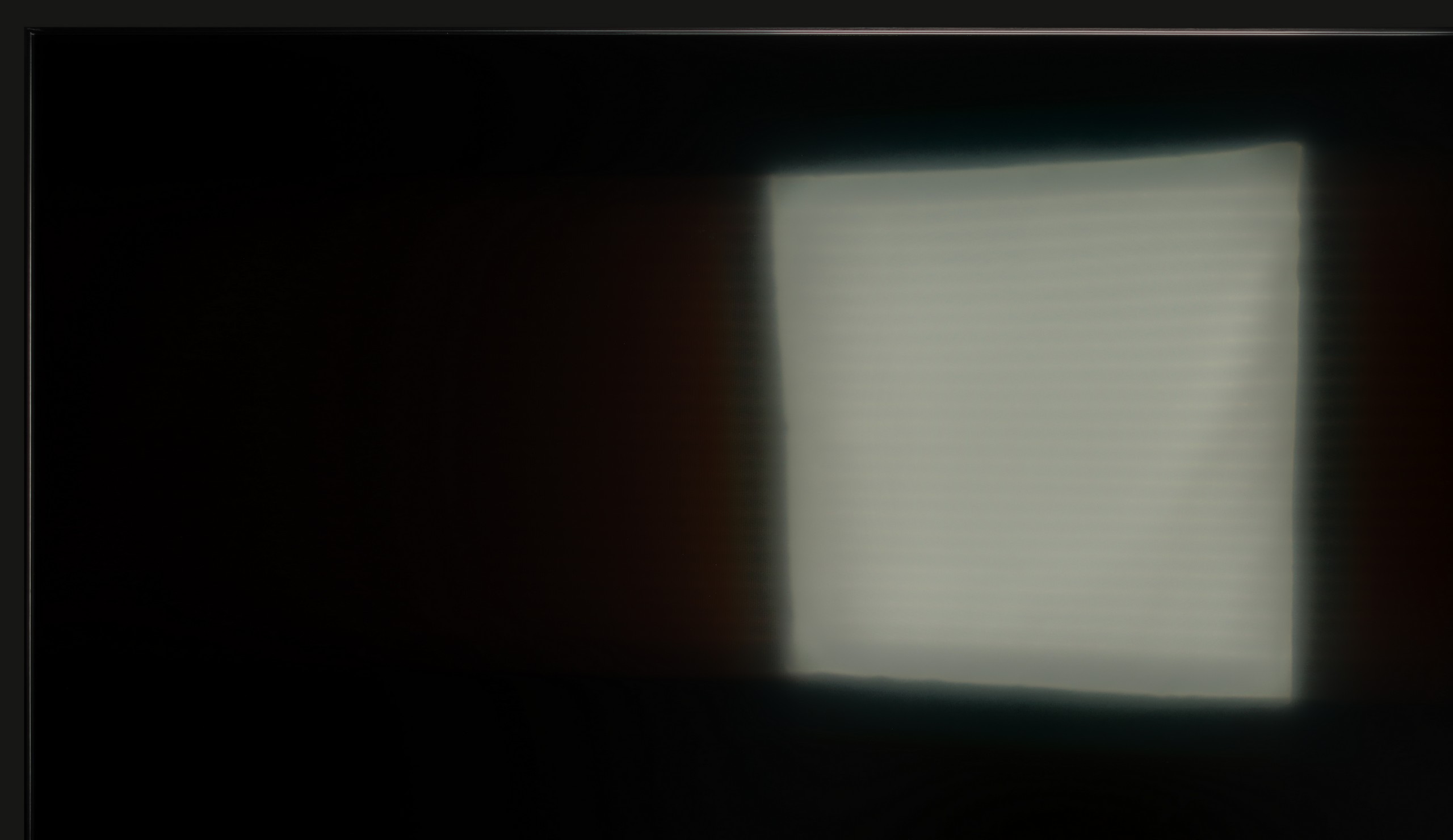


Matrix brightness
Average luminance SDR
SAMSUNG QN80F: 543 cd/m2
Samsung Neo QLED QN90D / QN92D: 629 cd/m2
The TV performs excellently in bright rooms thanks to its high brightness, especially when watching standard television. A constant brightness level of 600 nits ensures excellent visibility even in intense daylight. Unfortunately, despite a satin coating, handling reflections is average, which may affect viewing comfort. An additional downside is the matrix that improves viewing angles, which causes sunlight reflections to spread vertically, potentially further reducing viewing comfort in a bright environment.
QN80F is really a bright TV. The average brightness in SDR materials is around 550 nits, regardless of the scene, which practically means that you can comfortably watch content even in a well-lit room – and you don’t have to close the curtains every time we turn on a movie. The new satin coating of the panel is also a plus, as it handles reflections much better compared to last year's QN80D. Glare is less bothersome, and the screen maintains readability in various lighting conditions. It's hard to find fault with anything here – the QN80F simply performs great during the day.
Details about the matrix
Subpixel Structure:

Panel uniformity:

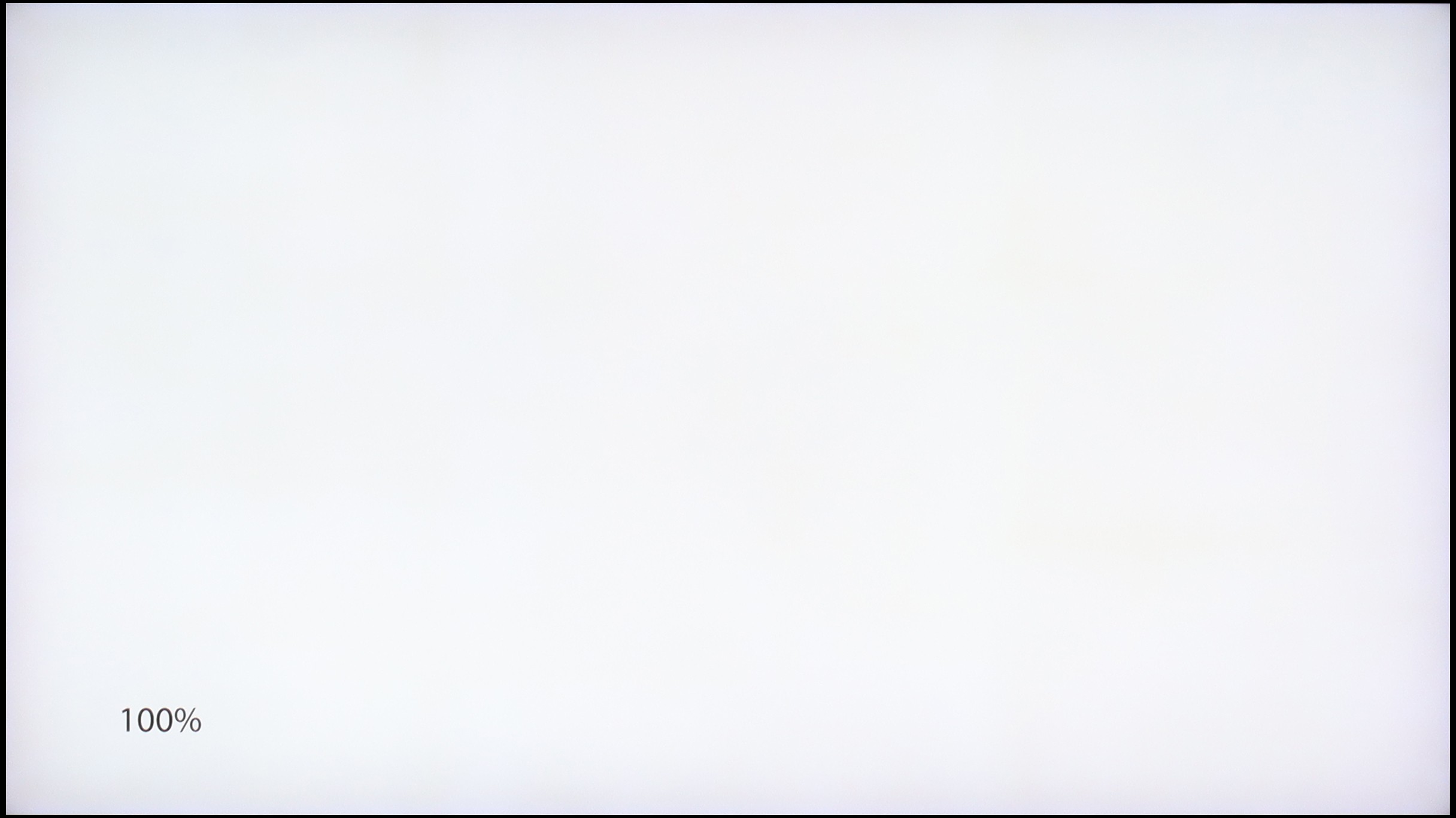
Samsung Neo QLED QN90D / QN92D
SAMSUNG QN80F
TV features
7.7/10
7.5/10
- HDMI inputs0 x HDMI 2.0, 4 x HDMI 2.1 48Gbps0 x HDMI 2.0, 4 x HDMI 2.1 48Gbps
- OutputsToslink (Optical audio), eARC (HDMI), ARC (HDMI)Toslink (Optical audio), eARC (HDMI), ARC (HDMI)
- Network InterfacesWi-Fi 2.4GHz, Wi-Fi 5GHz, Ethernet (LAN) 100MbpsWi-Fi 2.4GHz, Wi-Fi 5GHz, Ethernet (LAN) 100Mbps
- TV receptionDVB-T, DVB-T2, DVB-S, DVB-S2, DVB-CDVB-T, DVB-T2, DVB-S, DVB-S2, DVB-C
Classic features:
- Recording to USB (terrestrial TV)
- Recording programming
- Picture in Picture (PiP)
- RF remote control (no need to aim at the screen)
- Backlit remote control
- Teletext
- Audio only mode
- Possibility to connect Bluetooth headphones to the TV
- Possibility to simultaneously use Bluetooth headphones and the TV speaker
Smart features:
- AirPlay
- Screen mirroring (Windows Miracast)
- Wyszukiwanie głosowe
- Voice search in native language
- Ability to connect a keyboard and mouse


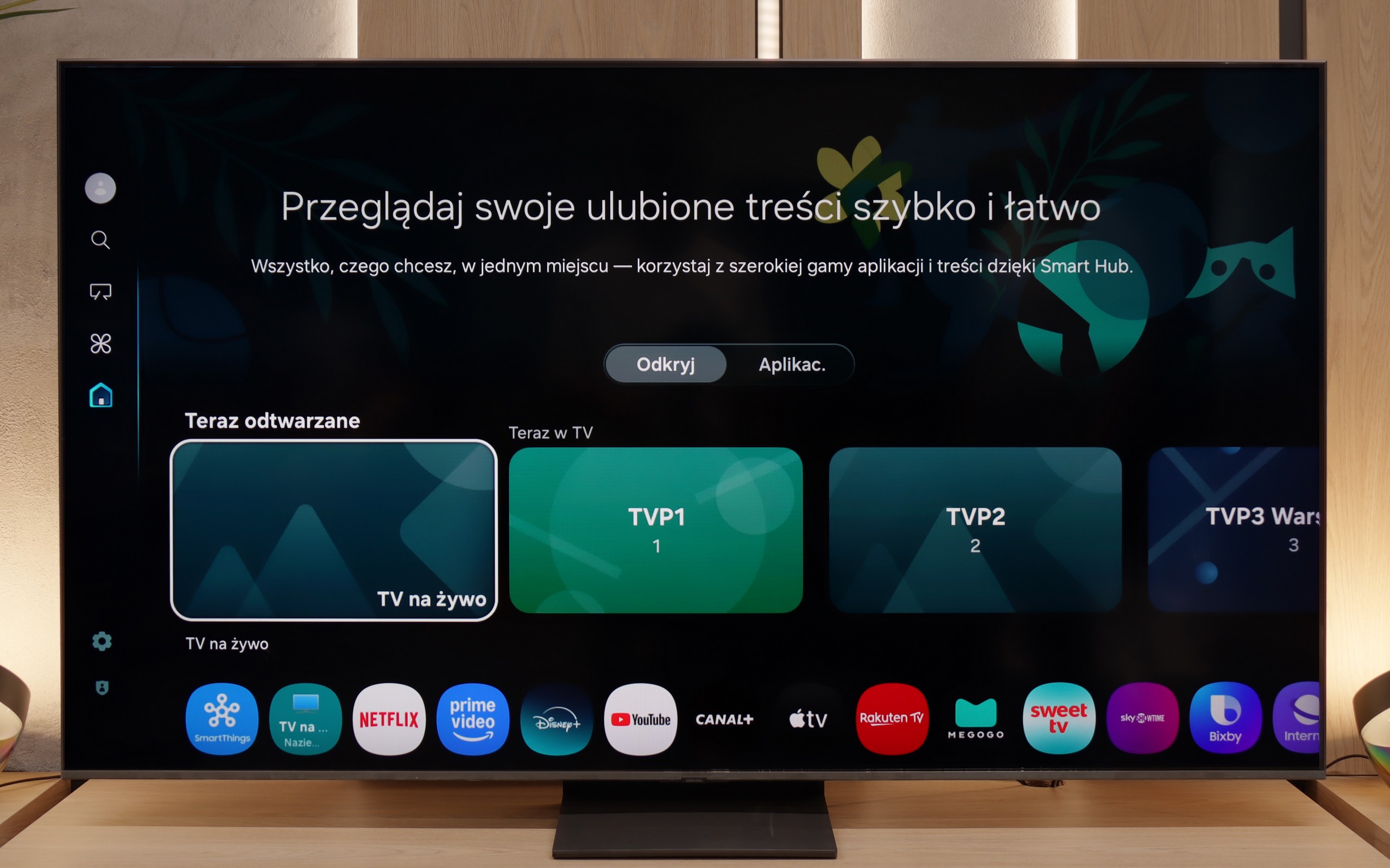
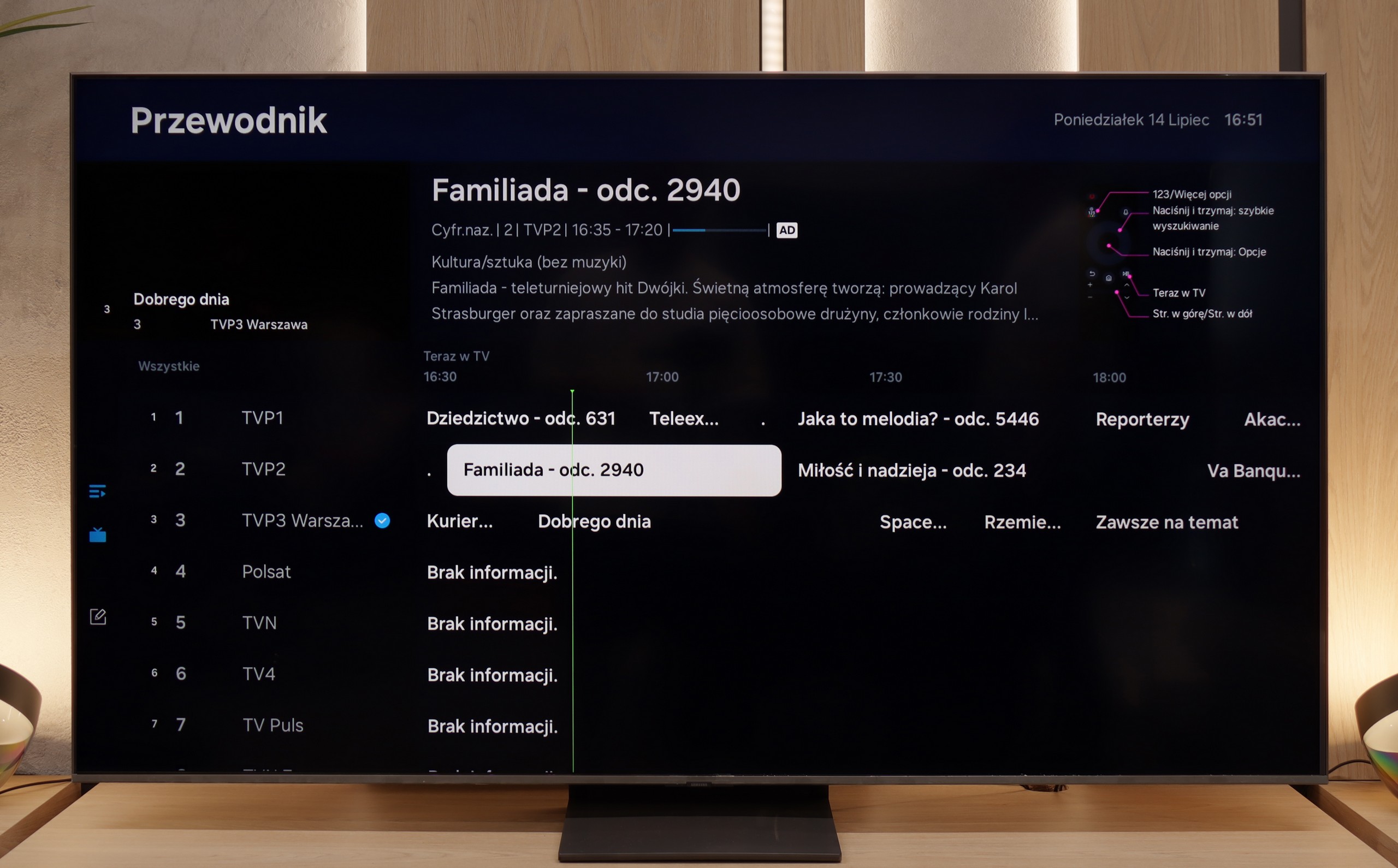
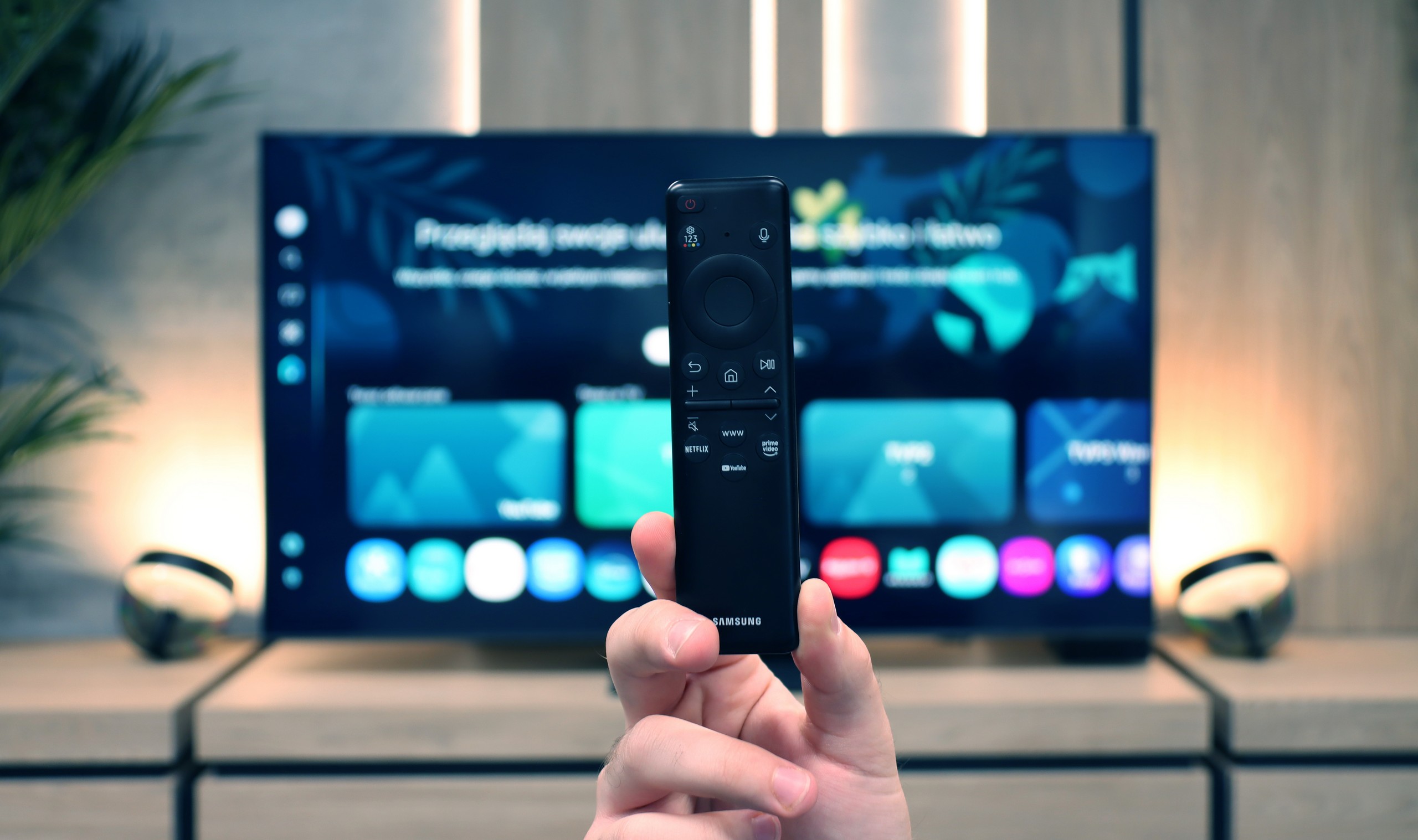
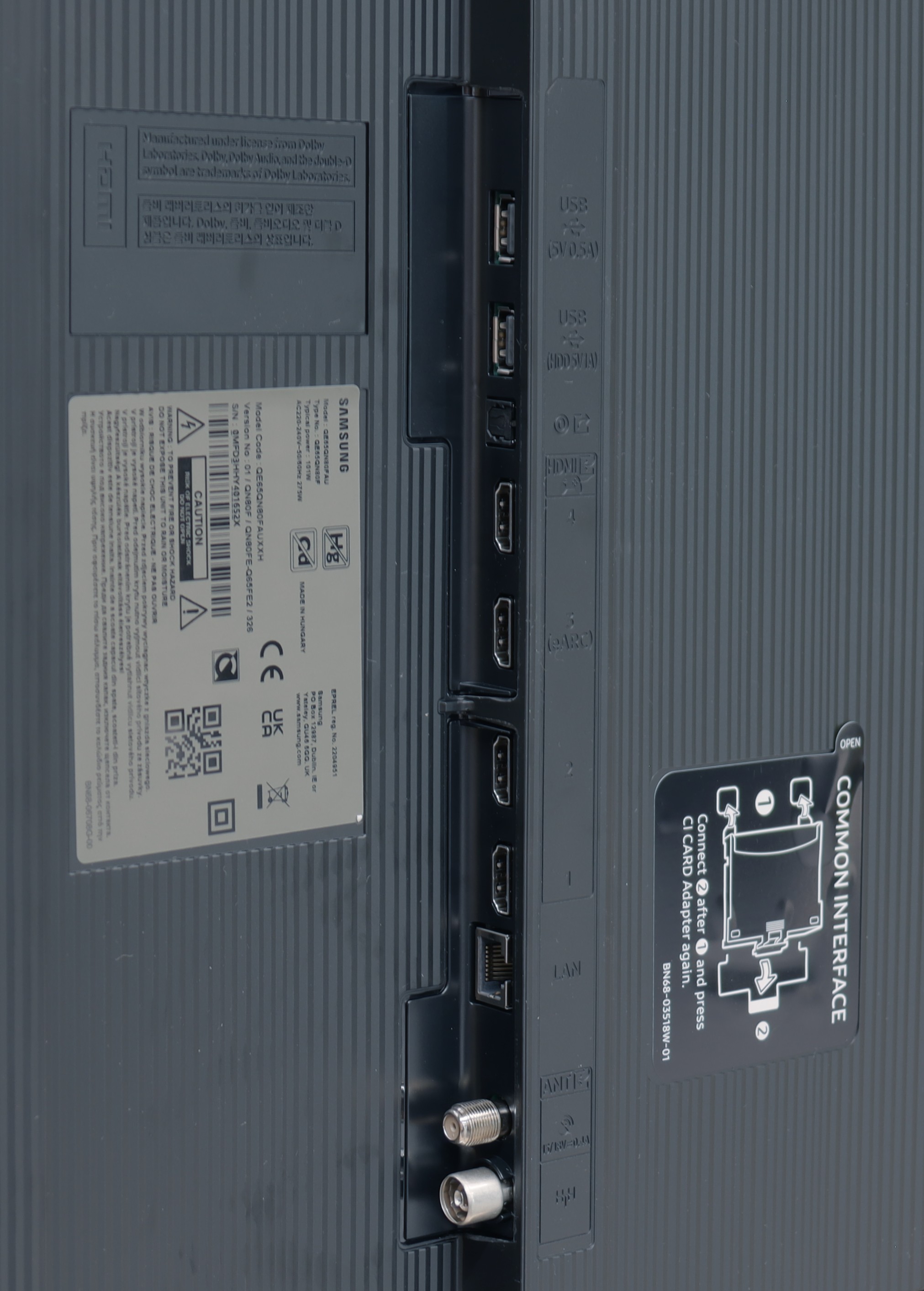
The Samsung QN92D TV impresses with its modern Tizen operating system, offering users a smooth, intuitive, and visually appealing experience. Tizen enables fast and seamless app browsing, enhancing overall ease of use. Its extensive ecosystem makes connecting the QN92D with other devices straightforward. Practical features like controlling set-top boxes with the remote eliminate the hassle of multiple remotes. Apple device users benefit from the AirPlay feature, enabling easy media streaming from an iPhone. Additionally, the remote PC function allows users to operate a computer on the big screen, and the Office 365 app makes the QN92D ideal for both work and entertainment.
Like many Samsung TVs, the QN92D includes an Ambient Mode feature, letting users personalize the display to blend with the surroundings. It can display images or information, making the TV an elegant part of the décor even when turned off. Speaking of aesthetics, the QN92D is notably slim, around 2 cm at its thickest point, with a premium-looking metal frame and a solid, included stand.
However, the QN92D may be slightly lacking for those watching traditional TV, as it doesn’t include a TV program recording feature on the Polish market. Nonetheless, it offers a PiP (Picture-in-Picture) function, allowing viewers to watch two programs simultaneously. The Samsung QN92D is a feature-rich TV that will appeal to gaming enthusiasts and multimedia users alike, seamlessly fitting into modern interiors.
SmartTV QN80F: Tizen
When it comes to smart features, the QN80F has nothing to be ashamed of. On the contrary – Tizen is one of the richest operating systems in terms of functionality. We have voice search, support for AirPlay, Miracast, and all the major streaming platforms at our fingertips. But Samsung's true advantage reveals itself in the smart home – SmartThings. Here, you can not only synchronize light bulbs and vacuum robots but also integrate devices from other manufacturers, thanks to support for the Matter standard. Suddenly, it turns out that the QN80F can serve as a home command center. There is just one "but" – Tizen is a closed system, so we might not find a few lesser-known apps. However, in practice, it still has everything that 99% of users need.
Classic TV features:
When it comes to classic features, it's just as good – well, almost. The QN80F supports picture-in-picture, a rarely seen but still useful PiP feature. We can easily find EPG, the old good teletext (yes, it works!), and the ability to connect external devices via Bluetooth – whether it's headphones or a soundbar. Unfortunately, there is no option to record to USB from the built-in tuners. That's a minor drawback, especially since the competition at a similar price point is increasingly offering this feature. It may not be a must-have function, but since everything else works so well, it's a pity that it missed that final touch.
Playing files from USB
9.1/10
8.4/10
Supported photo formats:
Maximum photo resolution:

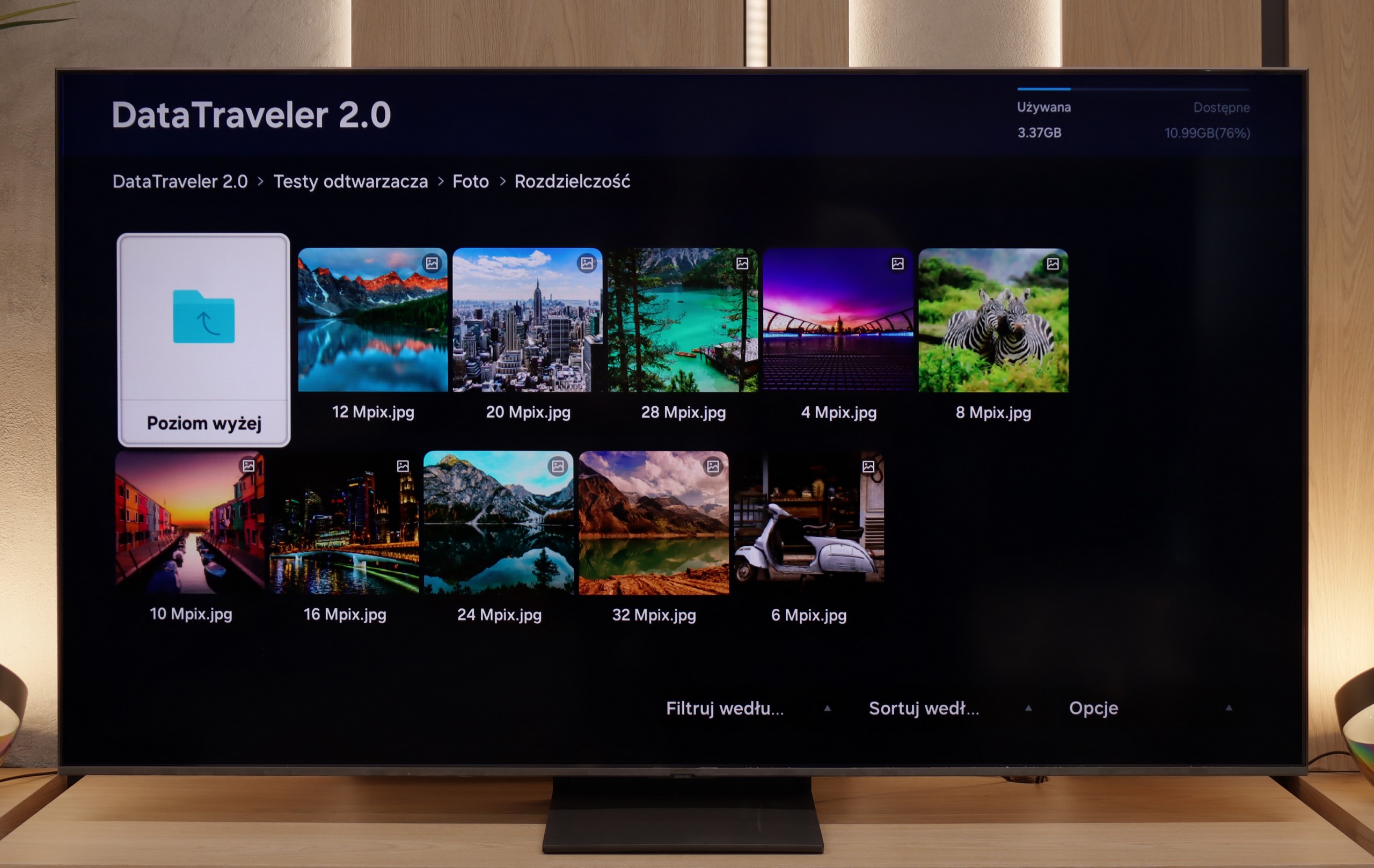
The built-in player in the Samsung QN90D should meet the needs of most users, as it smoothly plays the majority of popular video and audio formats. However, more discerning users may find a few limitations. Notably, it does not support HEIC photo format—a common format on Apple devices—nor does it accommodate several other, less widely used image formats.
The built-in media player in the QN80F handles most popular video formats – from classic MP4 to somewhat more demanding containers. It's not a powerhouse like VLC, but it's sufficient for home use. The situation is worse when it comes to photos – here, unfortunately, it's rather modest. The support is mainly limited to the JPG format, but hey, at least that's the most important one 👌. During our tests, there was also a minor issue with subtitles. The QN80F could only handle the simple text format .txt – other, more advanced formats (like .srt or .sub) were unfortunately not recognized.
Apps
8.7/10
8.7/10














































Sound
6.9/10
6.7/10
- Subjective sound quality:6.9/106.7/10
- Dolby Digital Plus 7.1:
- Dolby True HD 7.1:
- Dolby Atmos in Dolby Digital Plus (JOC):
- Dolby Atmos in Dolby True HD:
- DTS:X in DTS-HD MA:
- DTS-HD Master Audio:
The TV shares a similar speaker setup with the QN95, configured as a 4.2.2 system with a total output of 70W (except for the 50" model, which uses a 2.2 configuration, and the 43" model with a 2.0 setup). Despite its slim design, the TV delivers a loud, clear sound with a well-balanced audio profile. As with other Samsung models, the lack of DTS format support results in a slight deduction. Notably, it includes Samsung's proprietary Q-Symphony feature, enabling seamless sound synchronization with a compatible Samsung soundbar.
For a TV of this class, the QN80F sounds surprisingly good. It supports Dolby Atmos format, which is worth noting, as this is still not a given in many models in this range. Unlike the thinner QN70F, you can even feel a slight bass here – all thanks to the thicker casing, which simply gives more room for the sound to "breathe." For everyday viewing and series, it's more than enough, and with the right settings, you can even consider listening to music without the need to connect external equipment. However – as is often the case with Samsung, there is unfortunately a lack of support for DTS:X format, so if we are using audio devices that support this format, we will first have to connect them to the receiver and only then to the TV.


